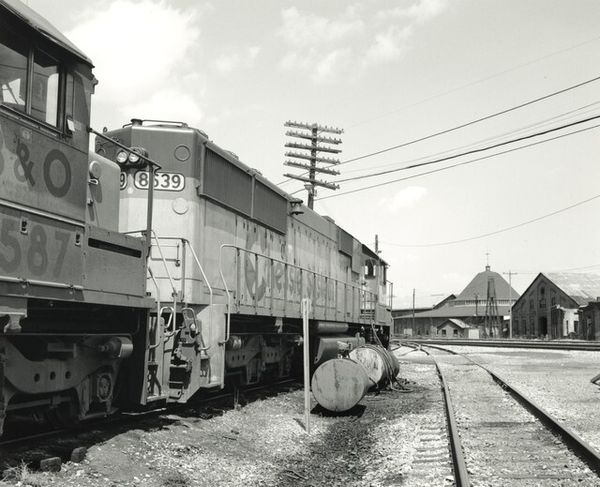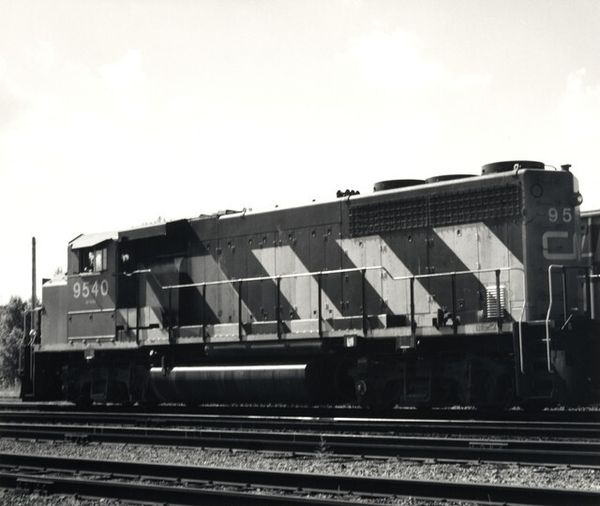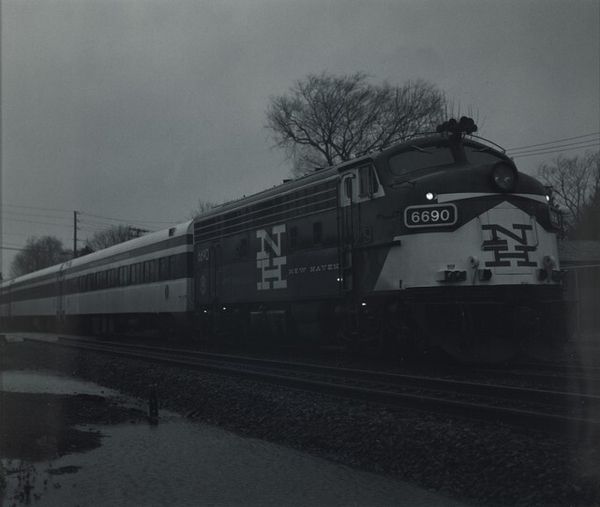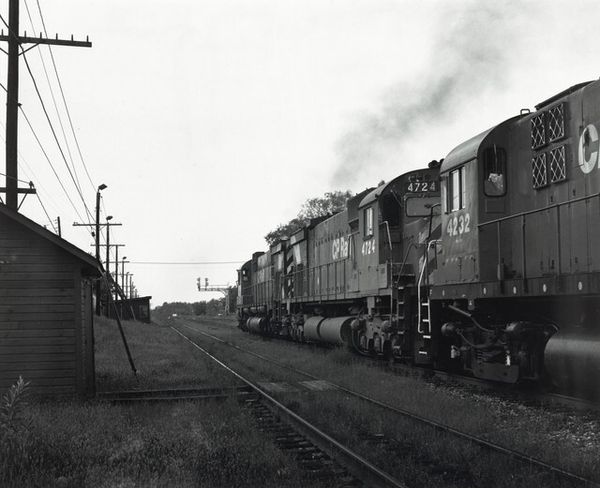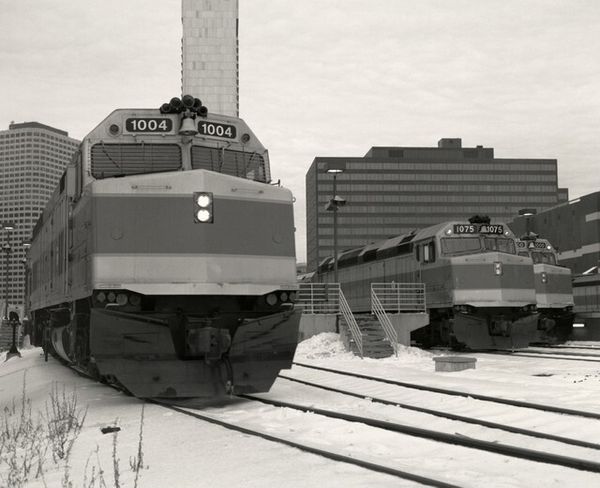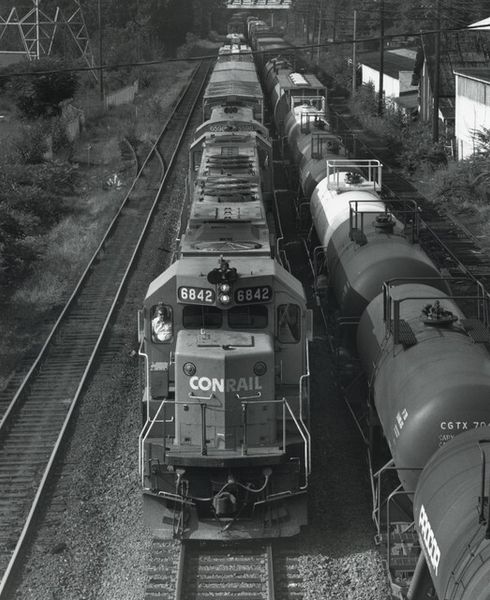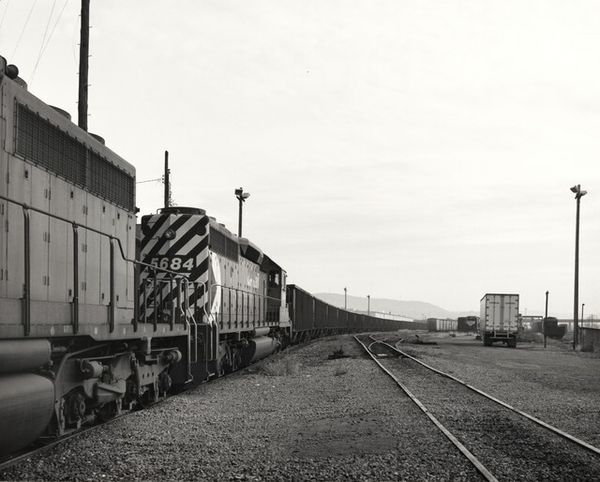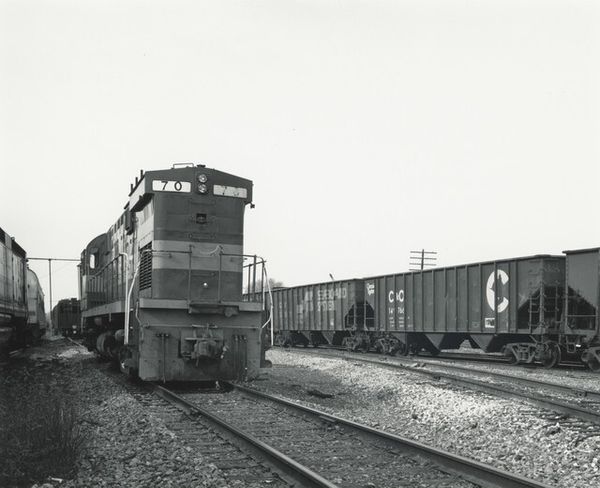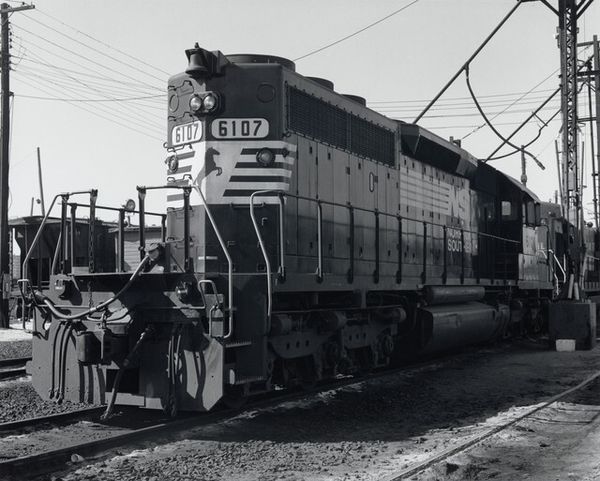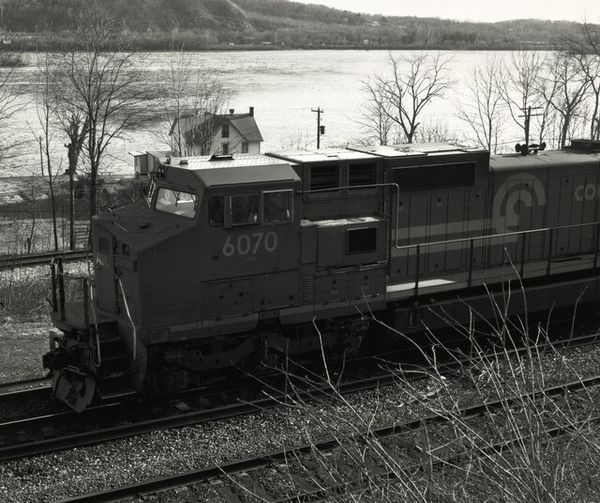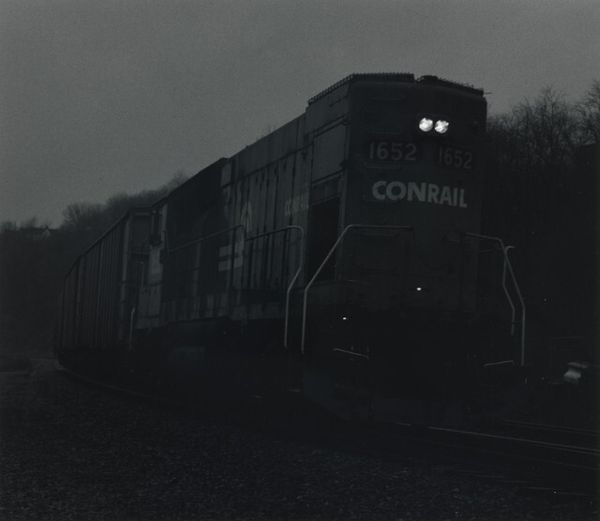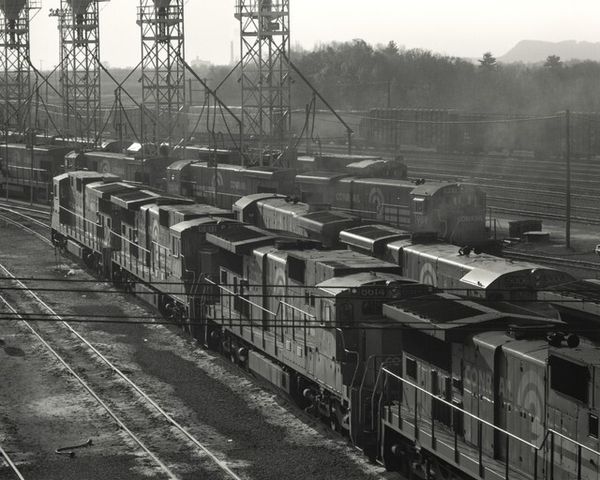
Central Vermont GP9, Palmer, Massachusetts Possibly 1990 - 2020
0:00
0:00
photography
#
black and white photography
#
countryside
#
landscape
#
outdoor photograph
#
rural
#
outdoor photo
#
black and white format
#
photography
#
monochrome photography
#
man-made
#
monochrome
#
realism
#
monochrome
#
shadow overcast
Dimensions: image: 24.2 × 29.6 cm (9 1/2 × 11 5/8 in.) sheet: 27.6 × 35 cm (10 7/8 × 13 3/4 in.)
Copyright: National Gallery of Art: CC0 1.0
Editor: This is "Central Vermont GP9, Palmer, Massachusetts" by James Welling, possibly created between 1990 and 2020. It’s a black and white photograph, and I’m struck by how it captures the stark reality of industrial machinery within a natural landscape. What’s your perspective on this photograph? Curator: From a formalist standpoint, observe how Welling uses the monochrome palette to emphasize tonal contrasts and textural details. The interplay of light and shadow across the locomotive's surface creates a complex visual rhythm. Notice the sharp, geometric forms of the train against the softer, organic shapes of the background foliage. How does this juxtaposition affect your perception? Editor: I guess it highlights the human-made versus the natural, almost a tension between them. The train seems so solid and unyielding against the slightly blurry background. Curator: Precisely. Welling masterfully uses focus and depth of field to further accentuate this tension. The clarity of the locomotive commands our attention, while the muted background serves as a contextual frame. Consider, too, the composition: the strong horizontal lines of the train and tracks provide a sense of stability, while the overcast sky creates a melancholic mood. Editor: It's interesting how the absence of color allows us to focus solely on the shape and form. Curator: Indeed. The photograph's formal elements work in concert to create a visually compelling statement about industrial presence in the landscape. What do you take away from analyzing these forms? Editor: Thinking about it this way has highlighted the dynamic interplay between the train's sharp details and the muted background. It really changes my appreciation for the artist's choices. Curator: Formal analysis provides a pathway into the intricate world of visual language, revealing the layers of meaning embedded within seemingly simple images.
Comments
No comments
Be the first to comment and join the conversation on the ultimate creative platform.
